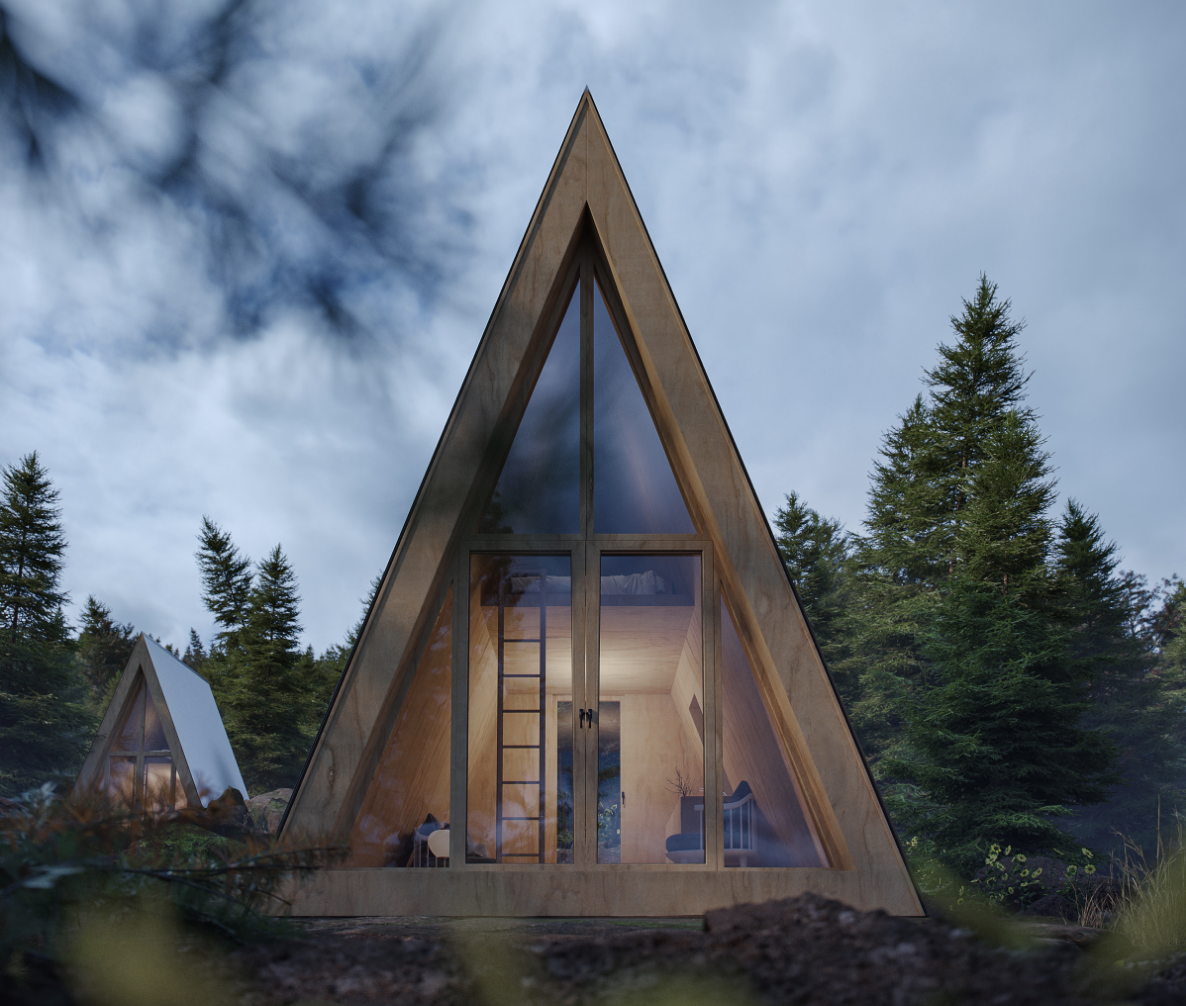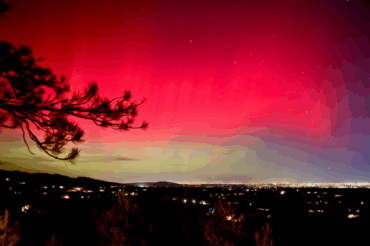It’s easy to fantasize about building your dream cabin, but it’s usually daunting when the time comes. DIY cabin company Den simplifies the process — with six key steps you should remember.
Mike Romanowicz and Lizzie Kardon went from zero construction experience to DIY heroes when they built their first cabin in 2018. Using their trial-by-fire experience, the couple now helps other DIYers make their #cabinlife dreams come true. Their company, Den, offers a collection of affordable, ready-to-market cabin plans.
Den’s printable plans consist of detailed drawings, inspiration prompts, and expert tips. They also include lots of arduous specifics you’ll need, like PDF blueprint downloads, International Residential Code guidelines, and recommended appliances.
When planning their own home, Romanowicz designed structure after structure using 3D rendering software — and would’ve kept chasing perfection if Kardon hadn’t given him an ultimatum.
“My wife was like, ‘Listen, if you don’t build one of these cabins, we’re selling our property. You have 90 days.’ The heat was on,” he said. The pressure worked, and now they spend many weekends with their 2-year-old son at the cabin. So they started Den to help others with the same process.
Here’s a Cliff Notes version of their guides to help you start scheming your own dreamy getaway.
1. Pick your parcel
Den’s founders settled on 8 acres in the Catskills, not far from their home in the Hudson Valley. The property is free of internet connection, and the cabin sits in the middle of a dense forest. “There aren’t any animals in the suburbs. There, we see a 300-pound bear walk in front of the door,” Romanowicz said. It’s just how they like their weekend escape. “It’s where we hit the reset button.”
If you don’t already have a piece of property, consider what setting most relaxes you. Lush meadows, thick forest, or near water? Think about how far you want to be from home and whether you want to access your cabin by hiking in or driving in, Romanowicz said. Once you have a fantasy location in mind, decide when to buy, whether that’s now or years in the future.
“The true first step is envisioning what you want,” Kardon said. When the time to buy comes, you’ll want to assess the best spot to build on. Check where water collects, which direction the sun rises, where you’re allowed to build according to code, and where you’ll want to spend the most time. Romanowicz recommends camping there first before breaking ground.
2. Set a budget
Den’s downloadable blueprints cost between $99 and $495 depending on the size of the structures (anywhere from 144 square feet to 1,000 square feet). That doesn’t include the cost of property, labor, materials and tools, site prep, and fixtures, though Den is working on an all-in-one kit product slated for next year.
When setting a budget for the entire process, Romanowicz recommends spending $153 per square foot, based on the national average that takes into account the project’s location and the cost of hiring a building team. A 150-square-foot cabin should cost around $22,500, and a 1,000-square-foot version could cost closer to $150,000. In the manual, Romanowicz explains different financing methods.
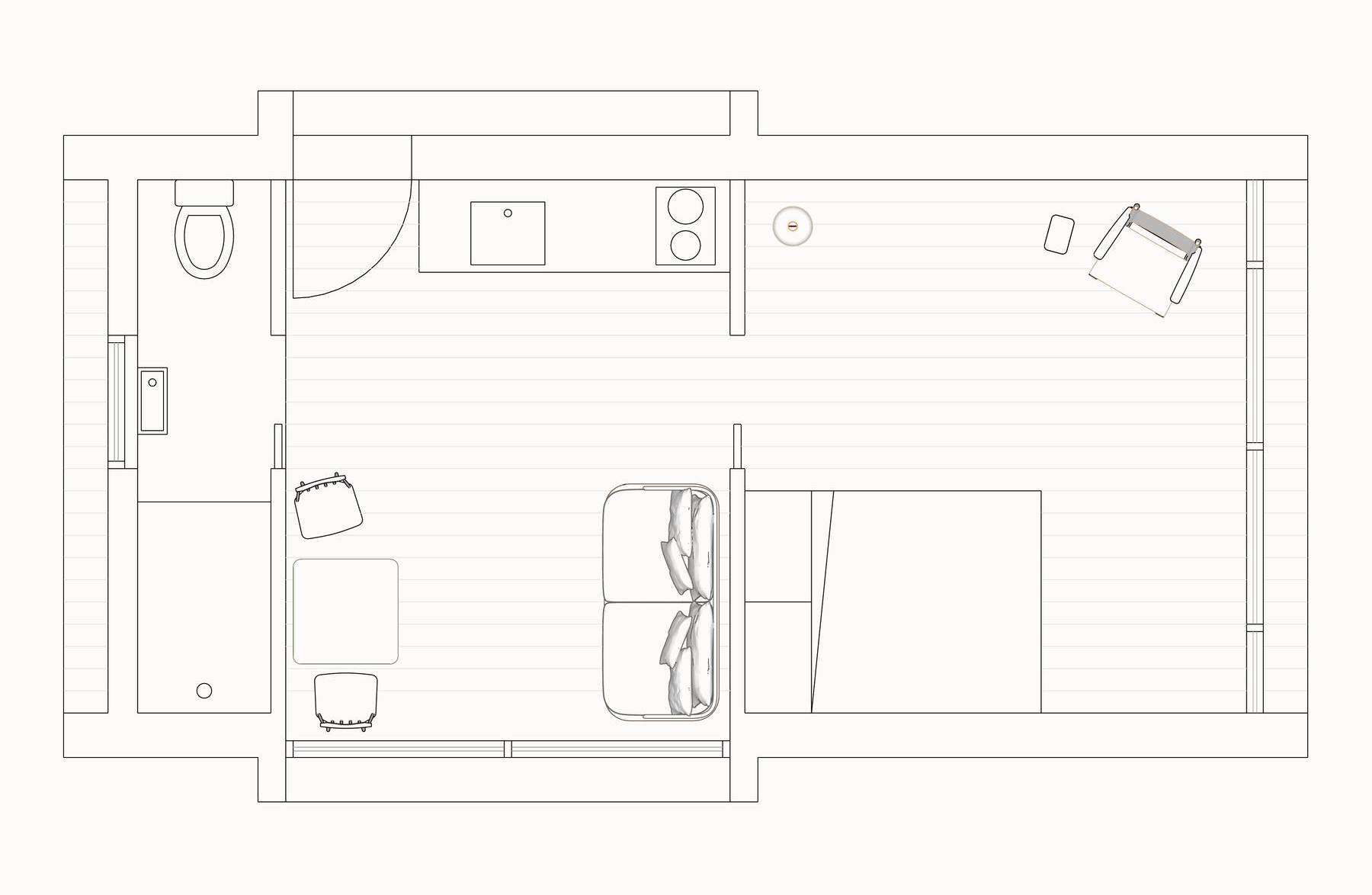
Below is a cost breakdown for his cabin and a good rule of thumb for yours. These are the types of exercises that you can access in the Den manual.
- 32% Land
- 30% Materials
- 20% Site Prep
- 12% Expert Assistance
- 4% Splurges
- 2% Tools
3. Team and tools
Establish who you want to work with and what tools you need. Will you need a builder? An electrician? A plumber? Or are you going to recruit some friends and pay in the form of pizza and drinks? Den’s plans empower DIYers to do it themselves, but for the trickier steps, expert help is always an option — albeit at a higher price.
“Some help will come free, some will cost a case or two of beer, and some will send you a bill,” Romanowicz wrote in the handbook. “All help is good help if it is the right help at the right time.”
Take stock of your tools and friends’ tools. Do you have what you need to cut wood and assemble walls and the roof? Or is a new table saw part of your budget? Den’s plans include complete lists of tools required for the build.
4. Blueprints
If you don’t want to fuss with the intricacies of a blueprint, Den has done the legwork for you. The company currently offers eight different floorplans, each with a bathroom, a kitchen, and room for a bed or separate bedrooms. The catalog will expand through the fall and will include a new category for office-style buildings.
- Tiny House Cabin: 144 square feet, sleeps 2 ($99)
- A-Frame Bunk Cabin: 168 square feet, sleeps 2 ($99)
- Loft Cabin: 240 square feet, sleeps 2 ($149)
- A-Frame Weekender: 415 square feet, sleeps 2 ($199)
- Modern Alpine Cabin: 448 square feet, sleeps 2 ($199, preorder for September)
- Modern Cottage: 600 square feet, sleeps 2 to 6 ($149, preorder for September)
- Lofted Modern Barnhouse: 748 square feet, sleeps 4 to 6 ($199, preorder for September)
- A-Frame House: 1,000 square feet, sleeps 4 to 6 ($299)
5. Get building
You have your plans, you have your team. It’s time to put your muscles to work. The first step is laying the foundation. Den’s manual and plans walk you through how to make sure the plot is level. Then come the framework and the more intricate anatomy of construction.
Once the walls’ frames are up, windows, doors, flooring, insulation, and roofing come next. Things like air conditioning, electrical wiring, and plumbing follow.
It’s also worth considering if you want to be on the grid or off the grid. Some areas require living structures to use electricity from a power line and water from a city water system. But if you’re in an area where you can live off the grid, you can choose to power with solar, collect rainwater, drill a well, and take care of your own waste.
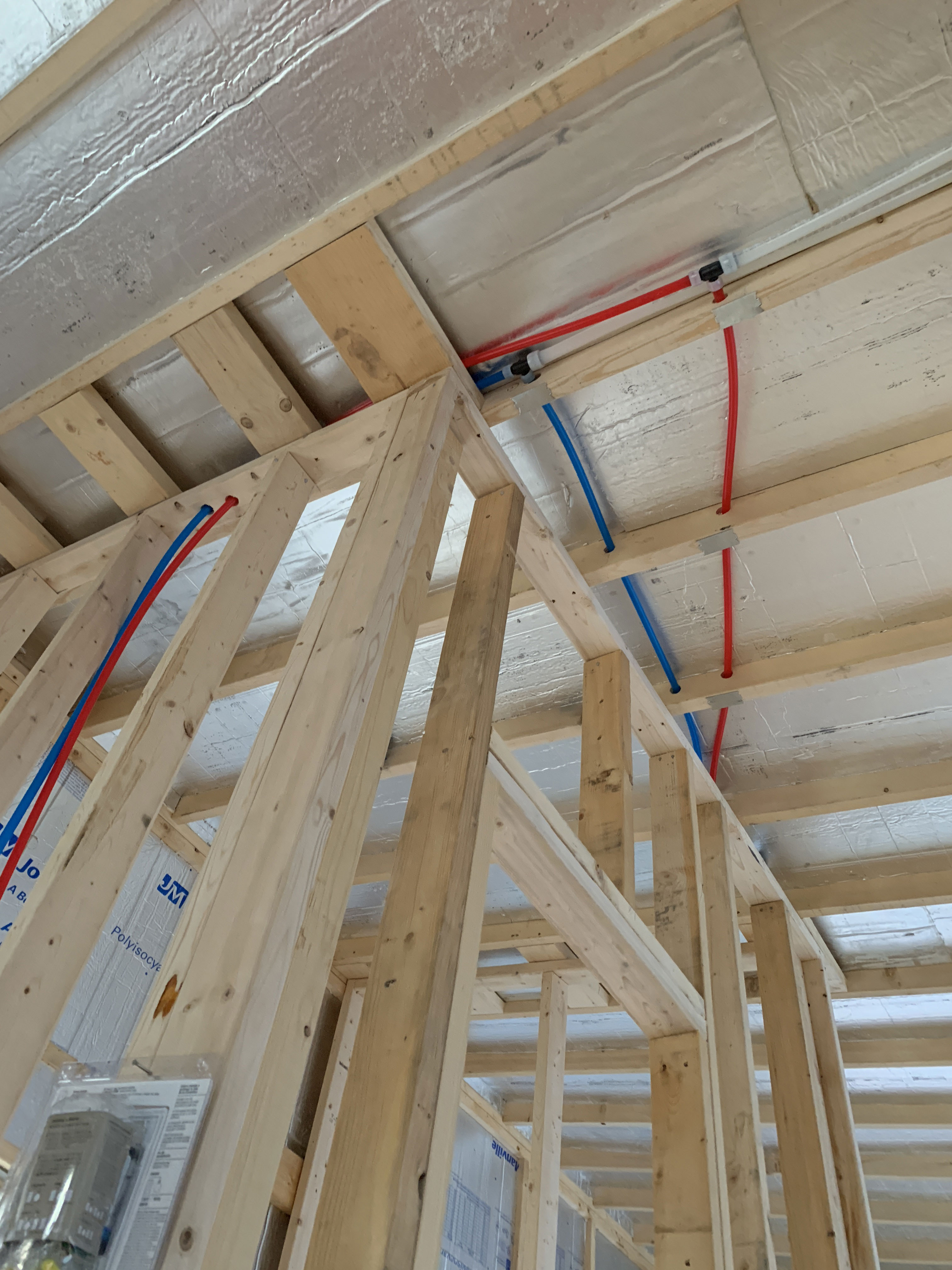
6. Make it cozy
Now you’re ready for the final touches — making a house a home, or rather making a cabin a weekend retreat. This includes installing cabinet fixtures, hanging lights, laying the floors, and making other aesthetic choices.
Romanowicz appreciates minimalism and a mix of Scandinavian and Japanese design. He settled on furniture-grade plywood for the interior walls and exterior pine siding sealed with linseed oil and pine tar.
Other touches include:
- Exposed or covered floors?
- Type of lighting
- Type of doors
- Paint or tile?
- Wood-burning stove?
As for the furniture and decorations, Romanowicz said, “You get to decide how to decorate the canvas.”
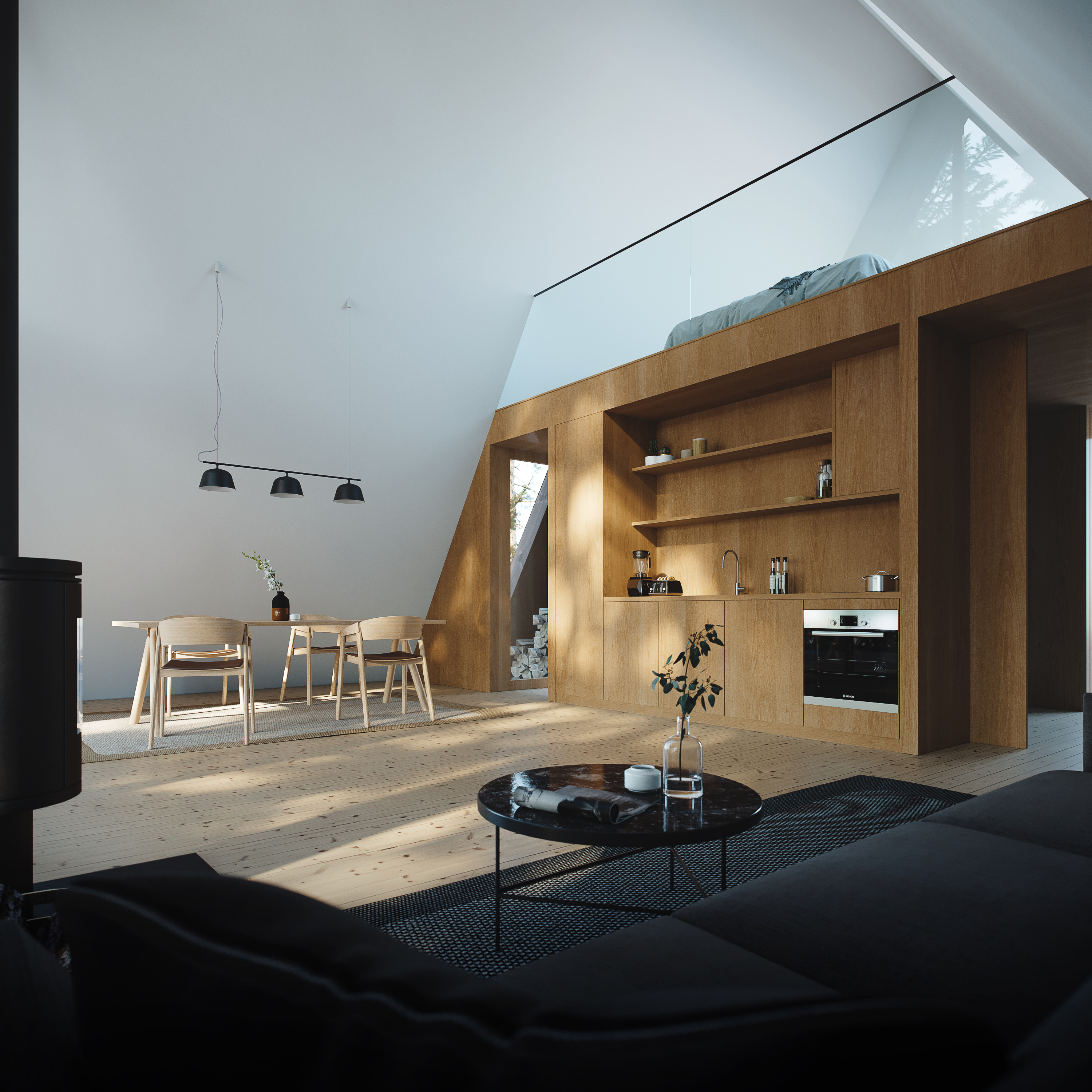
Want More?
If you’re confident, capable, and well-equipped, you can tackle an A-frame project all on your own. But if you need more guidance, check out Den. You’ll find ideas, inspiration, and answers to frequently asked questions.
And for an extra $100, DIYers can also get an hour of consulting with the Den team. Plus, a new 76-page manual, available for preorder for $20, is flush with personal anecdotes and interactive exercises to guide you through each step.
“We think of the plans as a piece of gear that enables you to take a first step toward creating your cabin, without spending thousands of dollars on land or on a building kit,” Kardon said. “It’s a lower entry into the whole process. That’s our ethos.”

